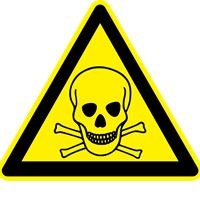(BRUSSELS) – The EU Council set out its long-term aims for EU chemicals policy Monday, for a toxic-free environment with better protection of human health and the environment, and a more competitive chemicals industry.
In its conclusions, the Council asks the Commission to implement the actions laid down in the strategy, including targeted amendments to streamline EU chemicals legislation, substituting and minimising substances of concern, and phasing out the most harmful chemicals for non-essential societal uses.
The strategy specifically sets out to ban the most harmful chemicals in consumer products such as cosmetics, toys, detergents, childcare items, furniture, textiles or materials that come in contact with food, unless they are deemed essential for health, safety or the functioning of society, or if no alternative is available. The Council also highlights the importance of limiting exposure to endocrine disruptors (hazardous for the hormone system) and to reducing the harmful effects of chemical mixtures.
The strategy aims to phase-out hazardous chemicals that affect vulnerable groups. Overall, all chemicals should be used more sustainably and safely.
A key novelty in the strategy is the shift of focus onto a” safe and sustainable-by-design” approach. Member states support this life-cycle approach that takes into account the toxicity of chemicals at all stages of their existence – from manufacture to use, recycling and disposal. The purpose is to prevent hazardous chemicals from entering products already at the design phase. This approach also aims to boost innovation and sustainability in the chemicals sector.
The Council endorses the EU taking a leading role at the global stage, by promoting its rules on chemicals as the golden standard, as well as ensuring that the EU has secured access to chemicals that are critical for health and the functioning of society.
Council conclusions on Sustainable Chemicals Strategy of the Union: Time to Deliver, 15 March 2021
Commission Communication: Chemicals Strategy for Sustainability Towards a Toxic-Free Environment



